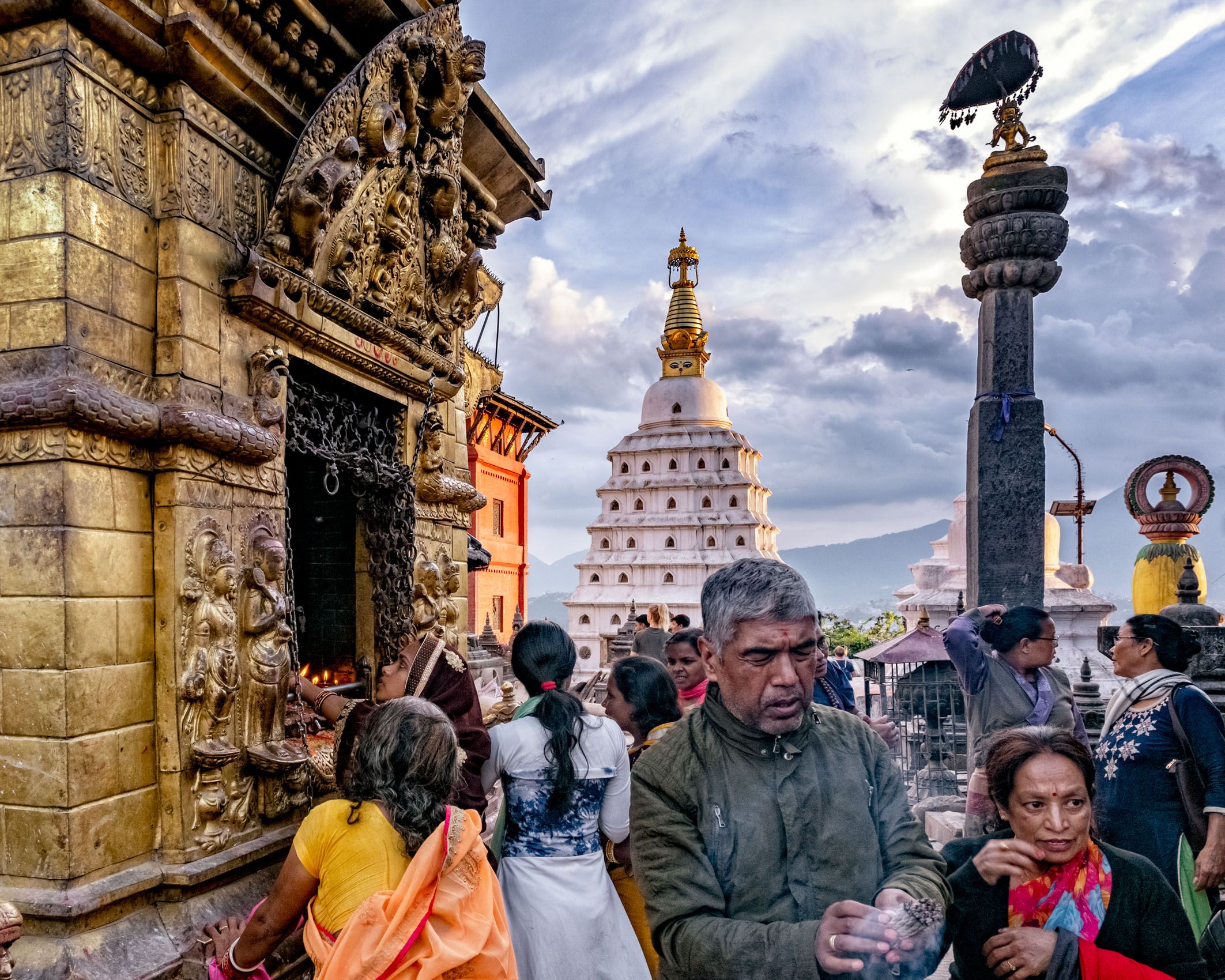NEPAL: The Stupas of Swayambhunath and Bodhnath
A Stupa (heap or mound in Sanskrit) is an earthen mound, usually faced with stone. Before the advent of Buddhism, these held the remains—either the ashes or seated bodies—of revered spiritual teachers. The earliest Buddhist stupas—built before the beginning of artistic representation of the person of Buddha—contained portions of his ashes, relics, or sacred texts. Thus, the domed structures not only had the abstracted form of the cosmos but also of a person seated in meditation, and came to be understood as a symbolic representation of the Buddha in a state of enlightenment. Stupas are both sites and objects of devotion and meditation on the Four Noble Truths, the path of enlightenment and liberation from the cycle of rebirth and suffering that is the core insight and teaching of the Buddha. Such acts of devotion and meditation include prayers, prostrations, offerings and the burning of incense; and also the kora—the process of circumambulating the stupa clockwise at least three times, either in a walking meditation or in successive prostrations, which suggests the endless cycle of rebirth (samsara) from which enlightenment can liberate the devotee. The ascending architectural levels of the stupa from the periphery of the base to the spire at its central axis visualize the ascending stages of enlightenment.
Two great stupas are located on the outskirts of Kathmandu, both designated World Heritage Sites. The hilltop Swayambhunath is a vast site crowded with monkeys as well as both Buddhist and Hindu structures and iconography. At the center is the great white stupa, topped by a cube painted with the eyes (including the mystical inner third eye) of the Buddha, looking out into the four cardinal directions. The first half of the images in this portfolio were taken at Swayambhunath, and the second half at Bodhnath (Boudha). The latter is Asia’s largest stupa, and is surrounded by a densely packed village of shops, monasteries, workshops, and residences largely populated by Tibetan exiles. Both of these sacred sites are pervaded by a special atmosphere, the air filled with fluttering prayer flags and the heady scent of incense and burning butter lamps. The experience is heightened in early morning and at dusk, when they are filled with monks, beggars, and prostrating and circumambulating devotees. These experiences have become my most vivid and precious memories of Nepal.

















